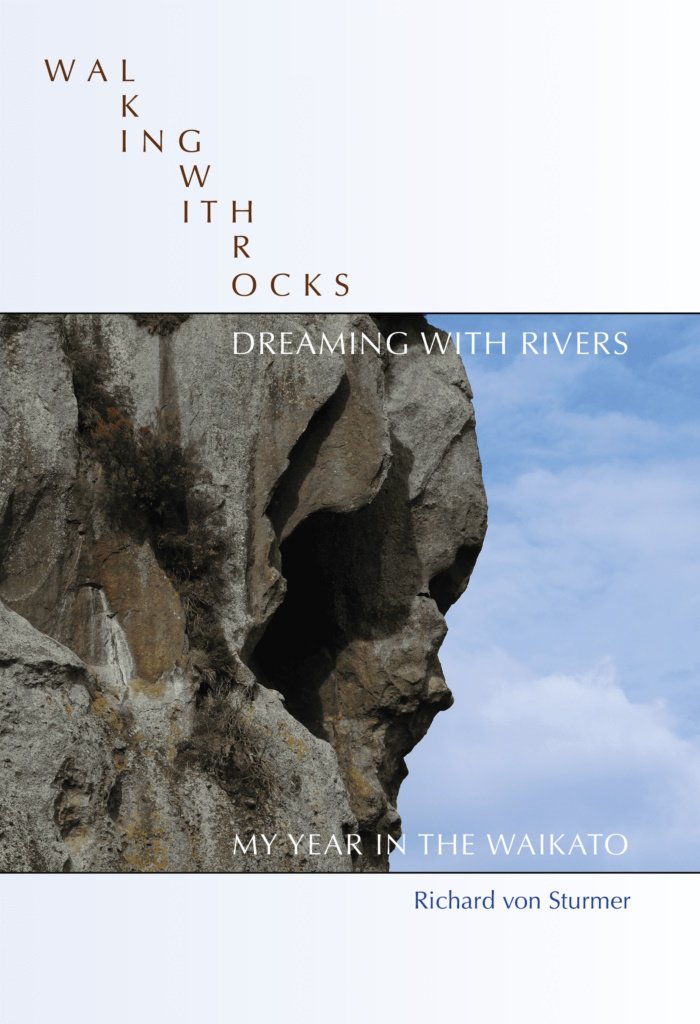Review: Walking With Rocks, Dreaming With Rivers - My Year in the Waikato
Reviewed by David Gadd
Author:
Richard von Sturmer
Publisher:
Titus Books
ISBN:
9781738594504
Date published:
August 2023
Pages:
150
Format:
Paperback
RRP:
$38.00
This is a book that is more than a book, one of those rare works which transcends itself and takes the reader on a journey of discovery and reflection.
In 2020 Richard von Sturmer was the writer in residence at the University of Waikato and the project he set himself was to visit some of the smaller, lesser travelled parts of the Waikato. Not for him Hamilton’s main drag or Matamata’s Hobbiton. He then rendered what he saw, what he felt, what he learnt into this work – Walking With Rocks, Dreaming With Rivers, given the sub-title of My Year in the Waikato, a book which is more than a book, described by Steve Braunias who has provided a thoughtful foreword, as ‘this beautiful object.’
It is an object of many parts. As we are now about to - or having just, depending on when you read this - celebrate National Poetry Day, let us start with the poetic parts. Von Sturmer is probably best known for penning the lyrics of the mighty Blam Blam Blam song There is No Depression In New Zealand in 1981, the dark, dying days of Robert Muldoon’s premiership – carless days, wage freezes, Think Big and the Springbok tour. It became an alternative national anthem – and if he had done nothing else, writing that song, would be a deserved claim to fame.
But von Sturmer has also proved himself an accomplished poet in the succeeding years. And Walking With Rocks is beautifully studded with little gems of verse, spare lines with the feel of haiku, but not confined by strict adherence to rules, and with a distinct Kiwi flavour, in the tradition carved out by locals virtuosos of the form such as John O’Connor and Patricia Prime. Von Sturmer himself, in his own short preface, acknowledges his work follows in the footsteps of Bashō’s The Narrow Road to the Deep North. In poetry, von Sturmer paints short snapshots that perfectly capture both the view and the spirit of the landscape before him.
In a desolate landscape
Of pine stumps
And broken branches
The spiders spin
Their ragged webs
Those poems, moments of pleasurable reflection, embedded as fence posts strung along von Sturmer’s journey, sit within prose that itself also sings with lyricism and a poet’s eye for all-important detail that conveys so much more than mere description. And it is in this prose that we find von Sturmer to be wonderful company, taking us with him as he wends far from State Highway 1 into obscure back roads of time and place. He brings an empathy to Putāruru, Kihikihi, Te Kuiti and Huntly which you rarely see. He embraces the odd, the whimsical, but never in a mawkish or mocking tone. There is an openness and a kindness, a skill in finding what is interesting and revealing.
He delves into the history of the Waikato with this same openness, from the quiet of Maniapoto’s cave to memories of the Battle of Ōrākau which should be far more widely known, and to a visit to what might rank as one of the oddest aspects of Waikato - the commune of Beeville in the early 20th century. Here, residents combined environmental enlightenment with challenges to societal norms which sound like they could have easily veered into problematic behaviours. At times, von Sturmer co-opts willing experts to accompany him, providing extra insight and adding the sensitivity with which he seamlessly intertwines the bedrock of Māori tradition in the region.
He has also provided a wealth of photographs that go far beyond simple depiction of the scenes he describes, allowing us to see the world around us by proxy using that poetic eye which captures both beauty and curiosity and immerses us more deeply into his journey. Mention must also be made of Titus Books, based in the northern fringes of the Waikato in Mangatangi, which has created a beautiful book, handling all of the poems, prose and photos von Sturmer has assembled in a crisp, clear manner. No small task.
We have here then an intriguing travel book, which will have you reaching for your phone so you can flick Google maps to satellite and explore the area alongside von Sturmer as he finds the remnants of a fish pond or passes over a river bridge. A travel book which will have you planning a trip yourself to the Waikato so you can delve into some of the areas he describes, showing us how much more there is to Waikato than the big river and the ‘Tron.
And also, von Sturmer has given us a guidebook on how to see the world, whatever corner you may live in, anew; how to pause, reflect, meditate, turn your head to pick up the sound of a waterfall, how to narrow your eyes to see a fallen tree mimicking a taniwha on the banks of a river, how to time-travel yourself back into the rich natural heritage, the Māori history and the era of Dominion that have all left their mark in their own ways on our country, and which all should be remembered and reflected upon. This is not just a book. It is a triumph.
Reviewed by David Gadd


